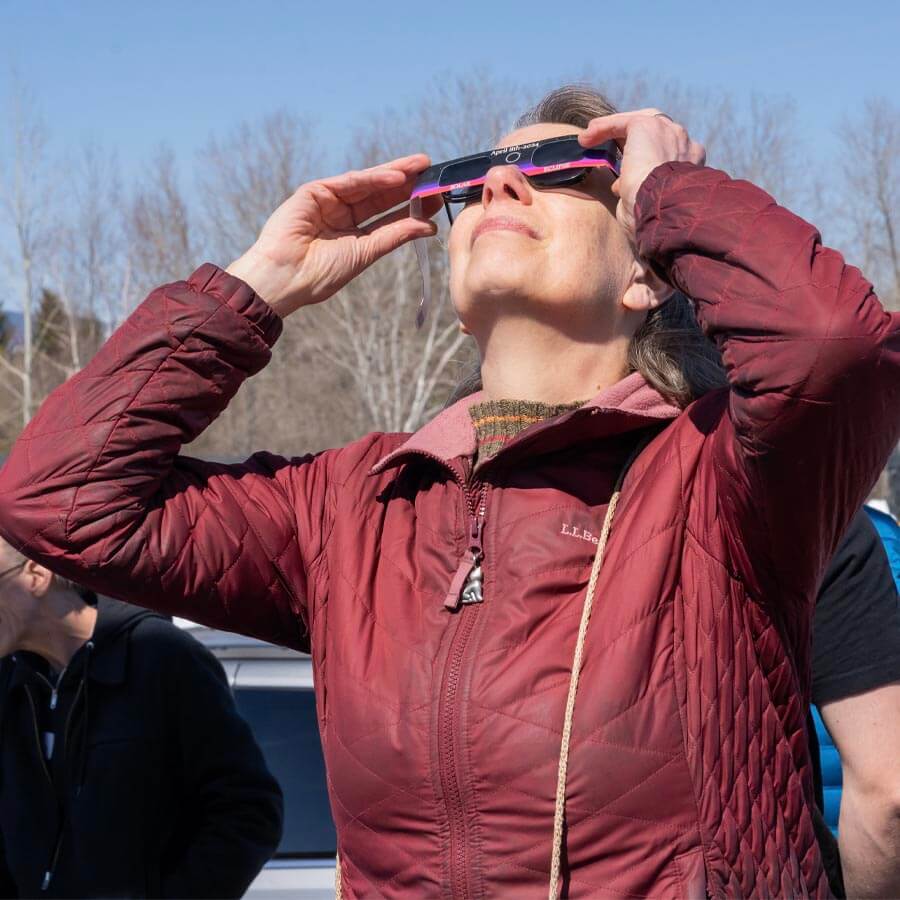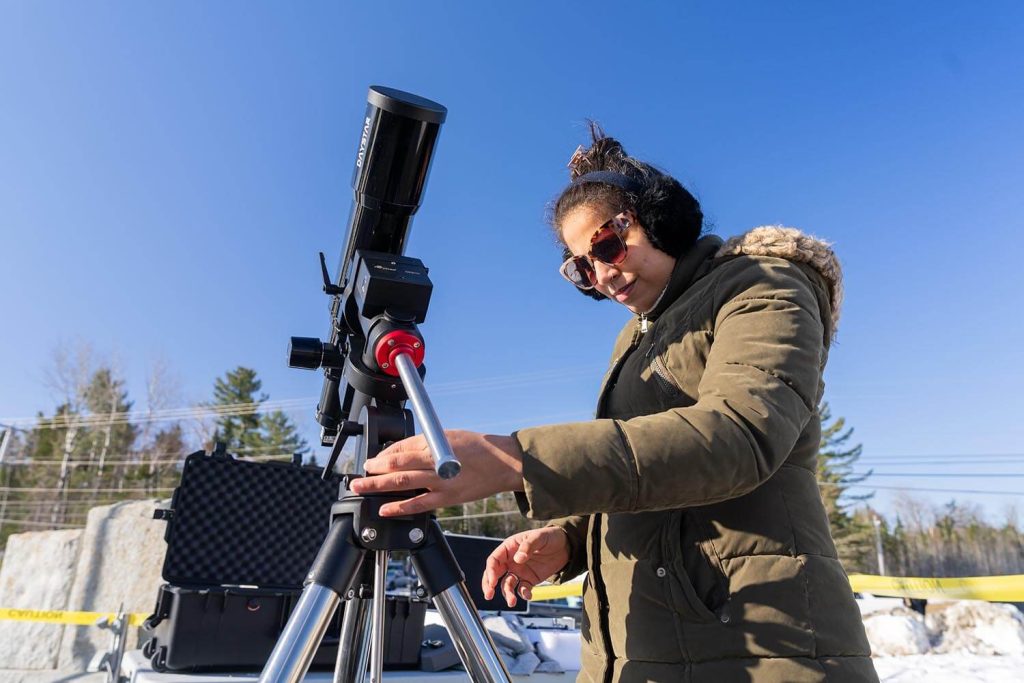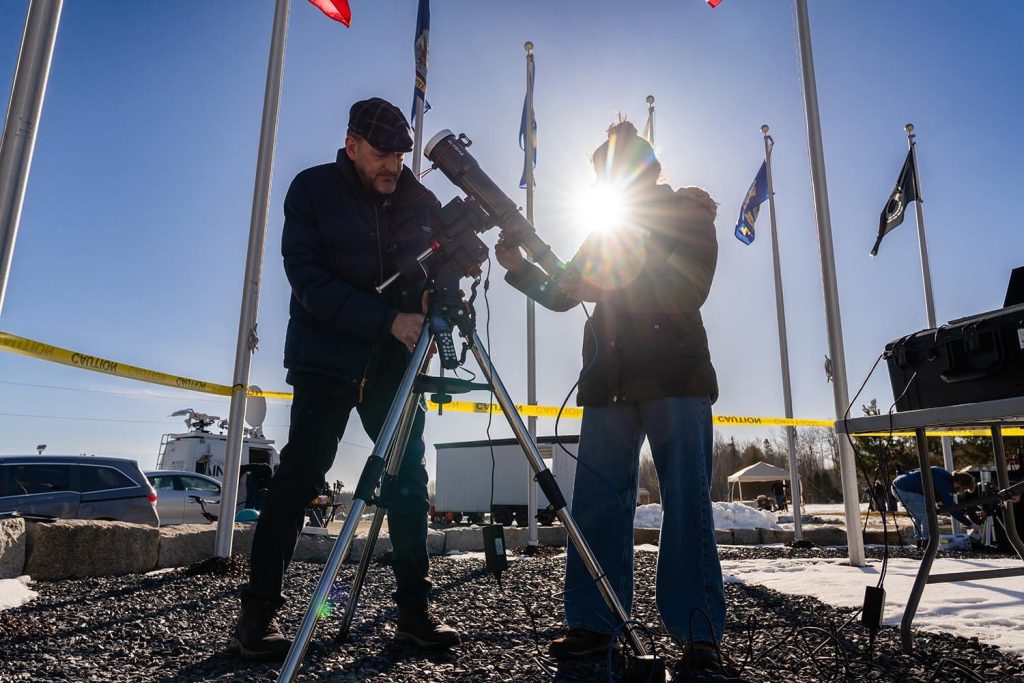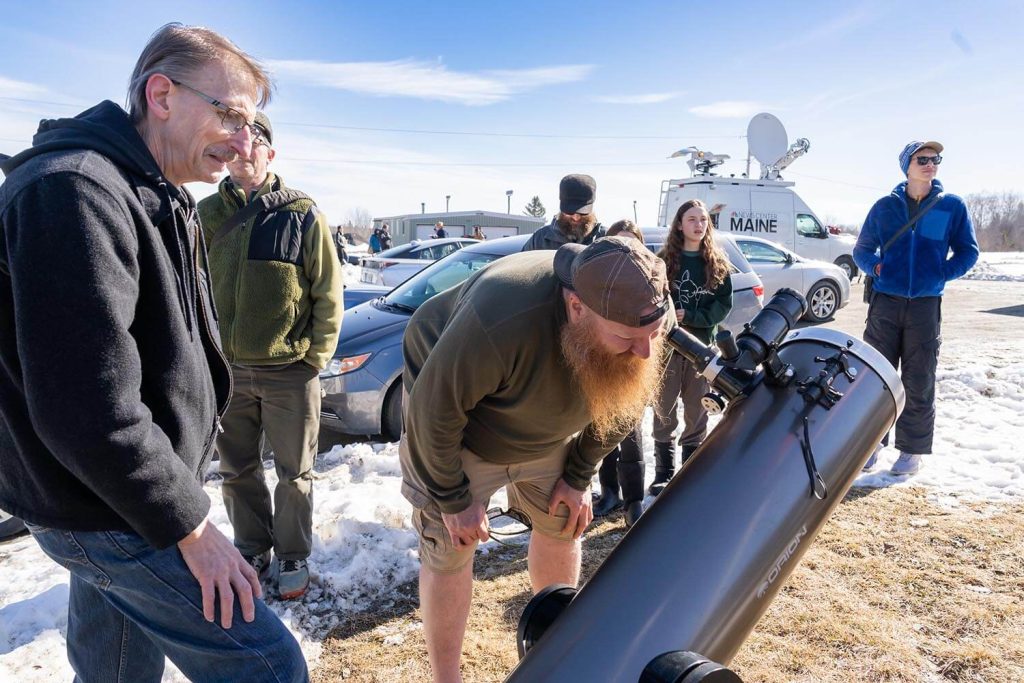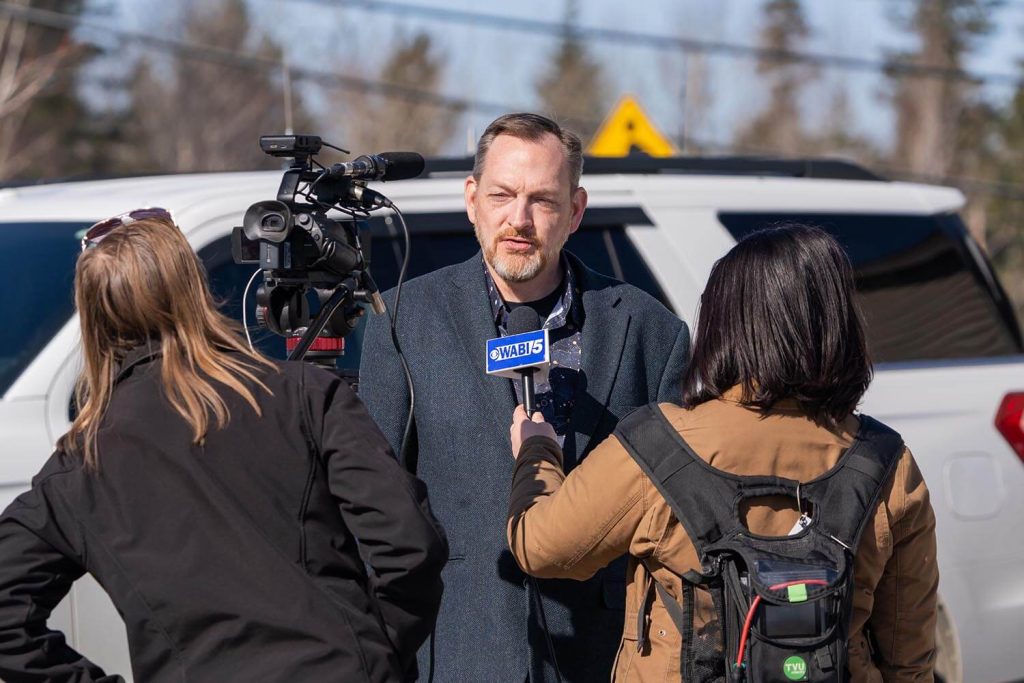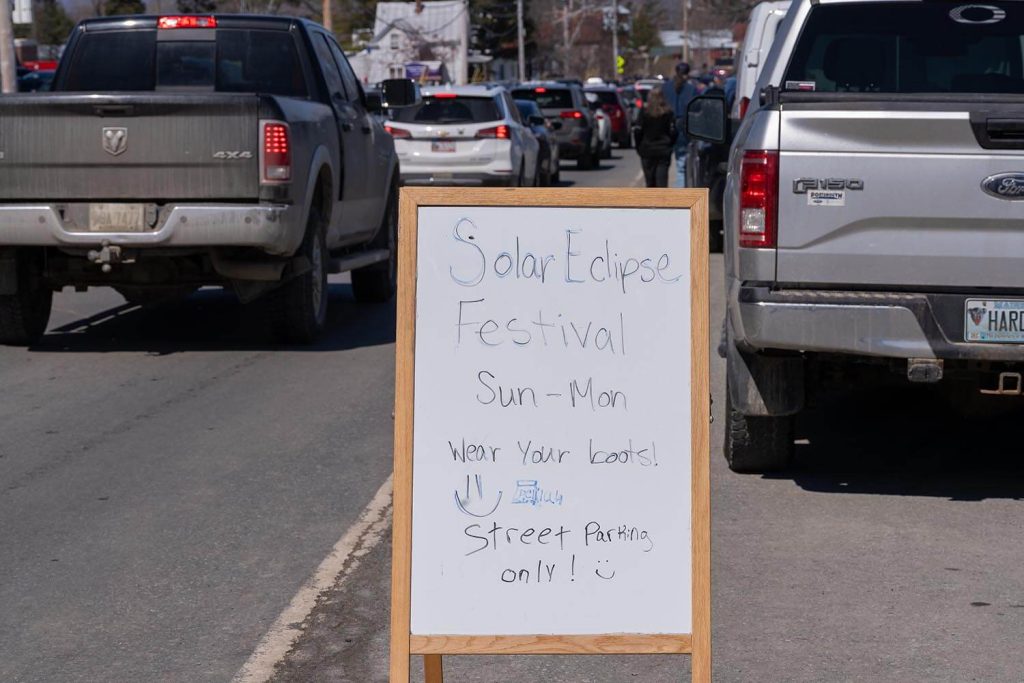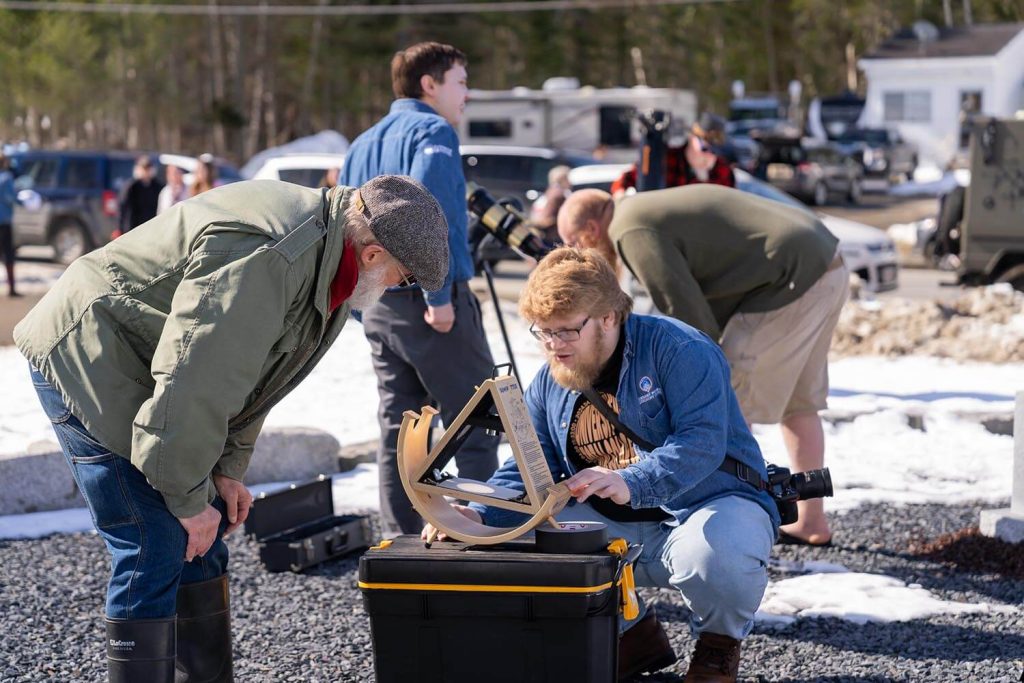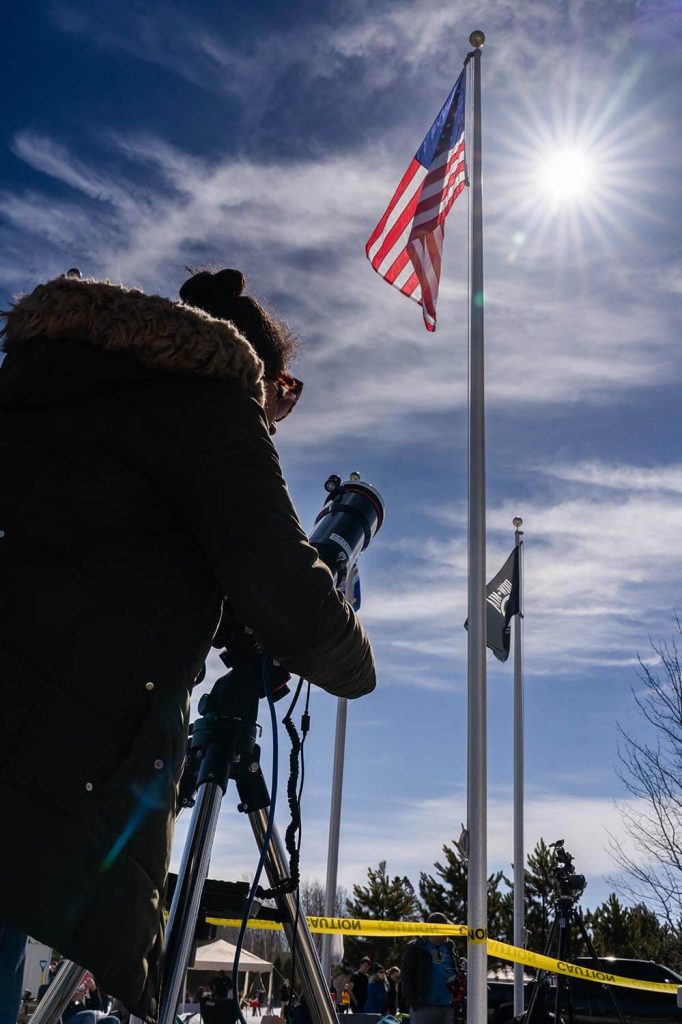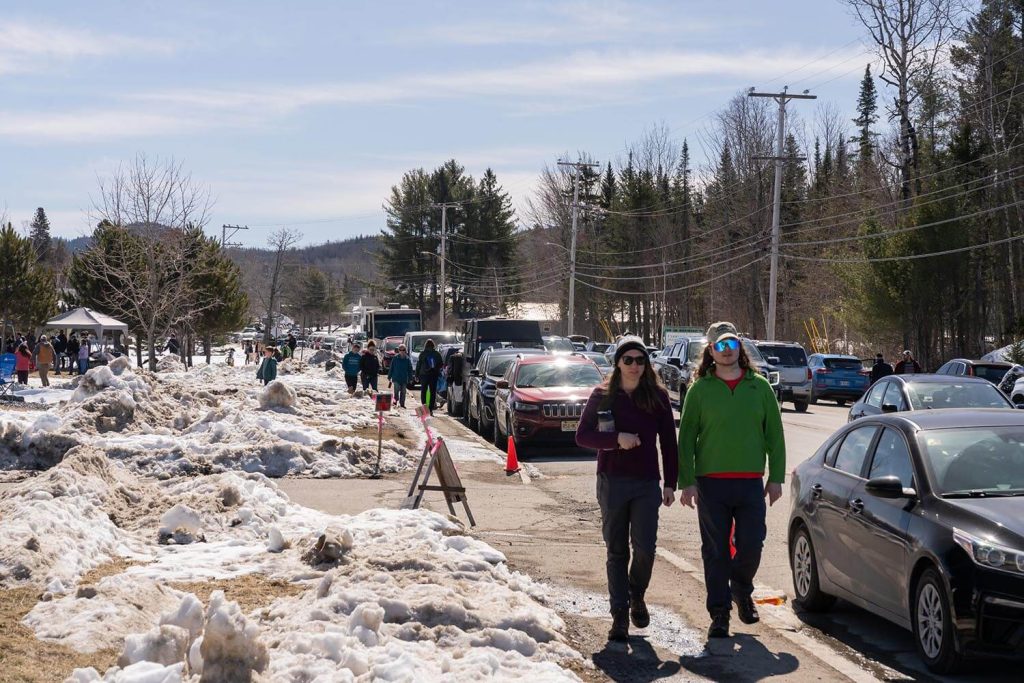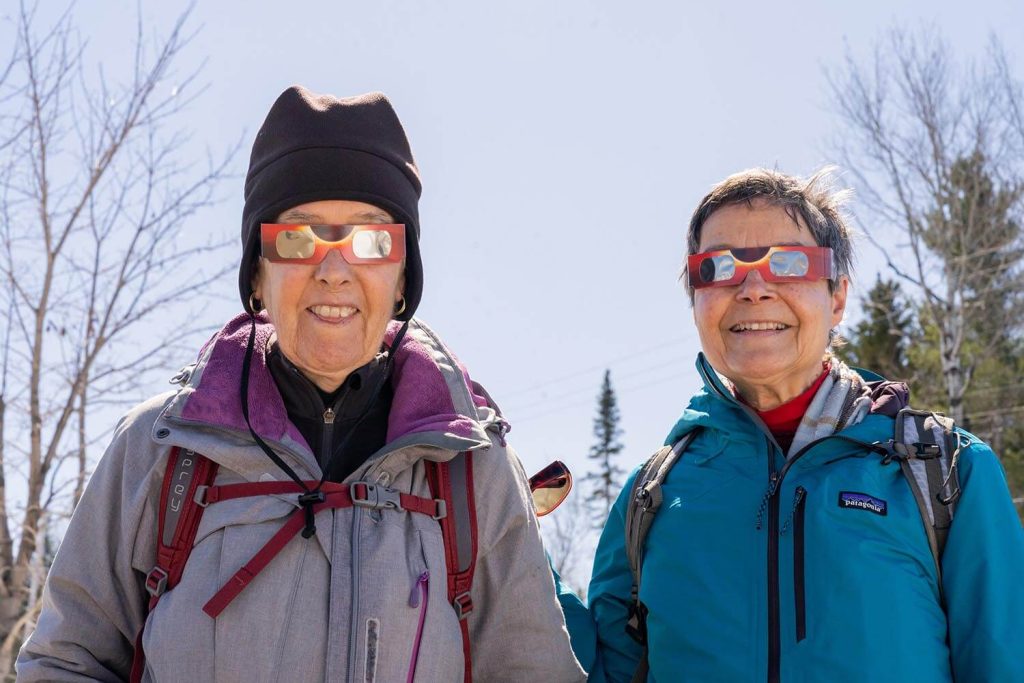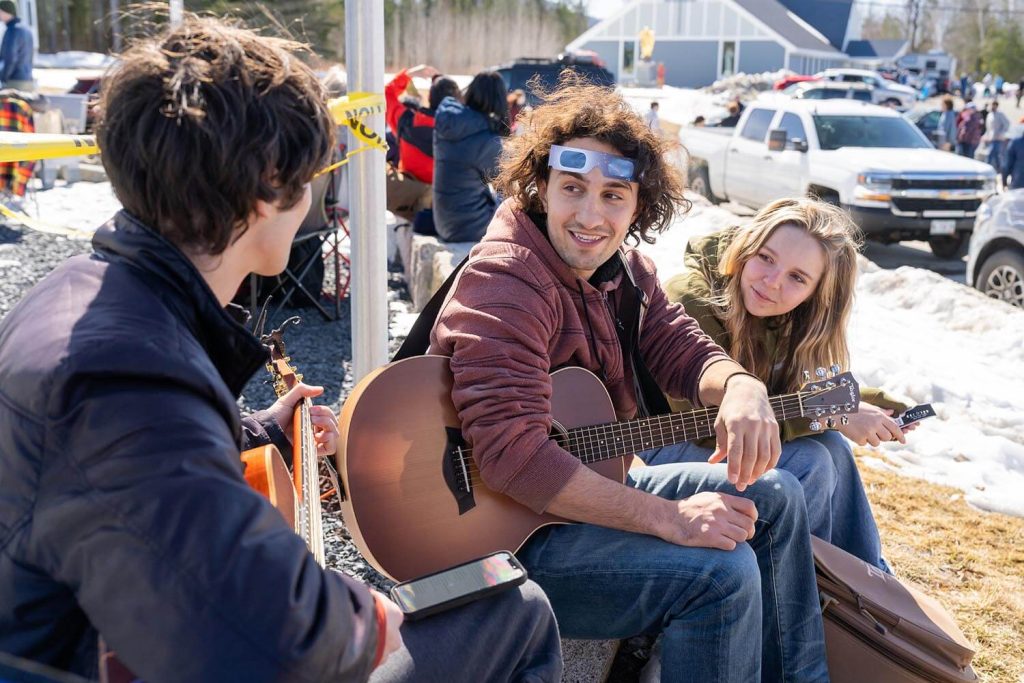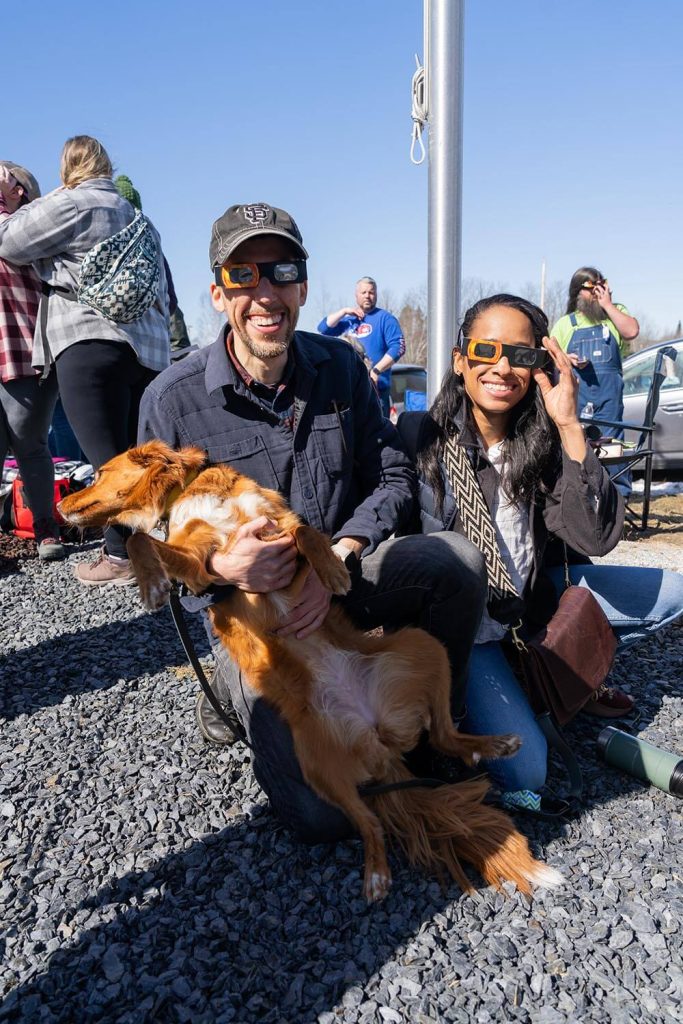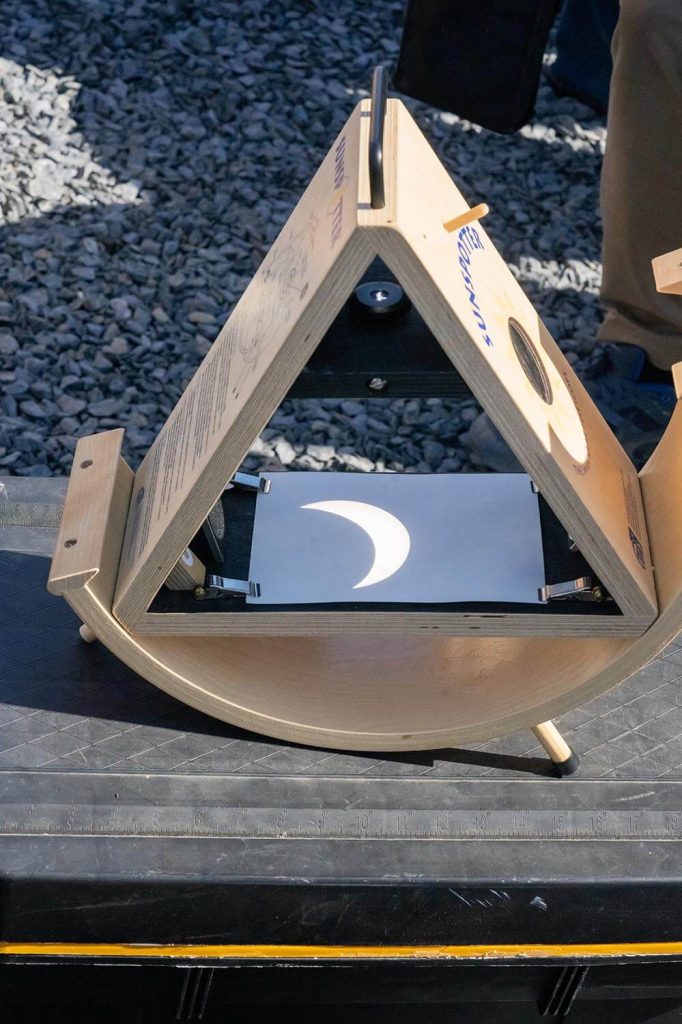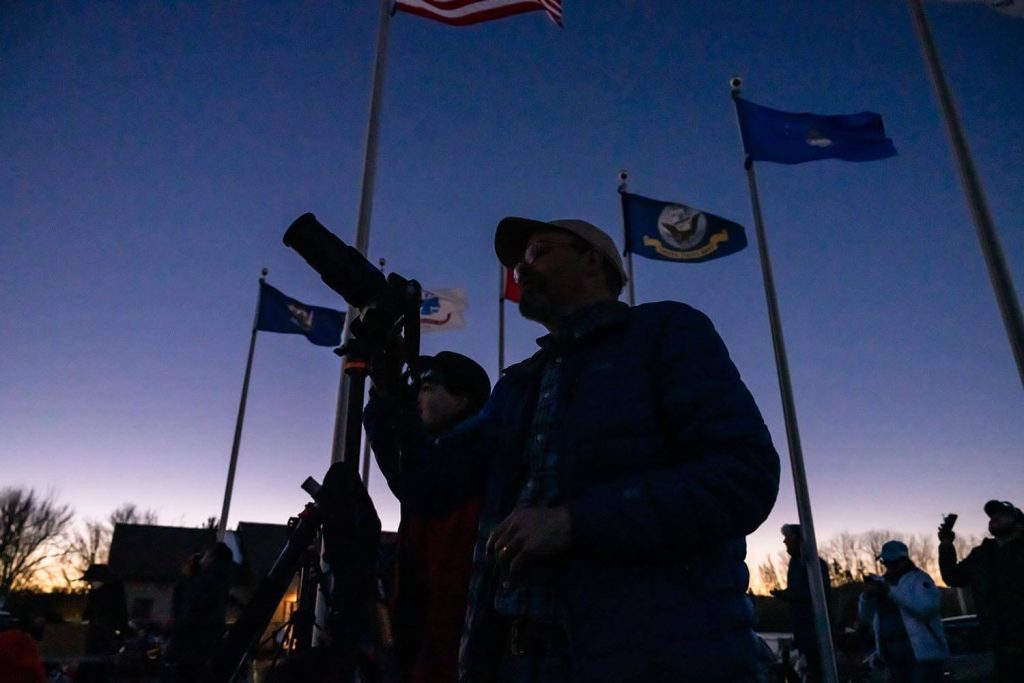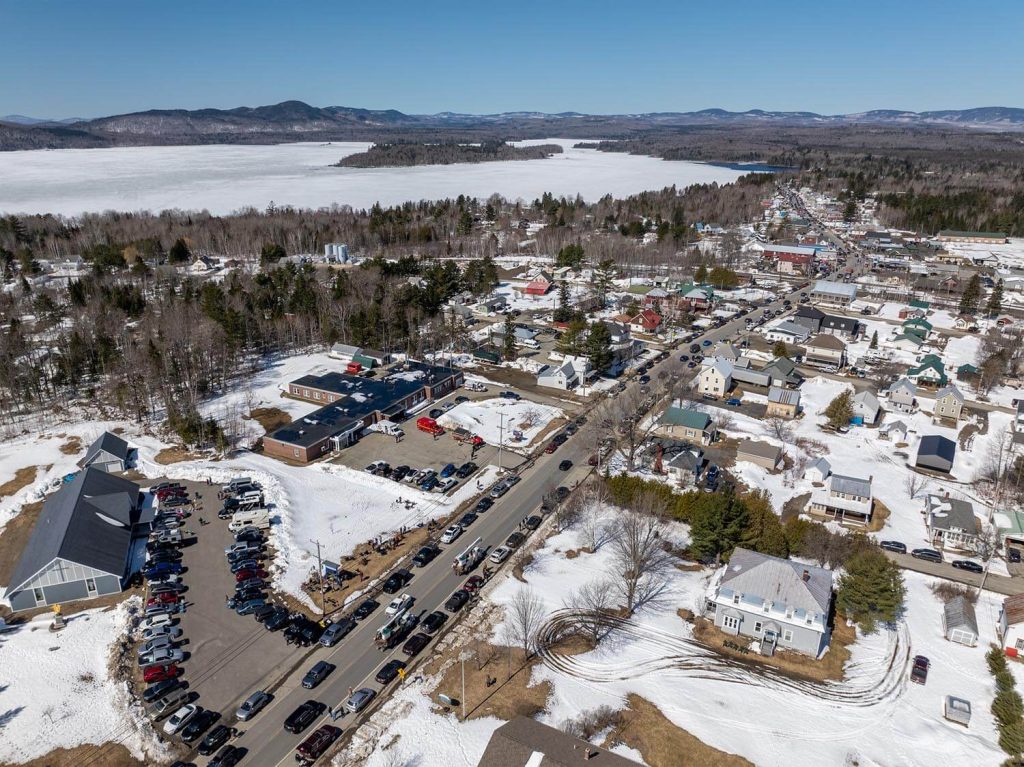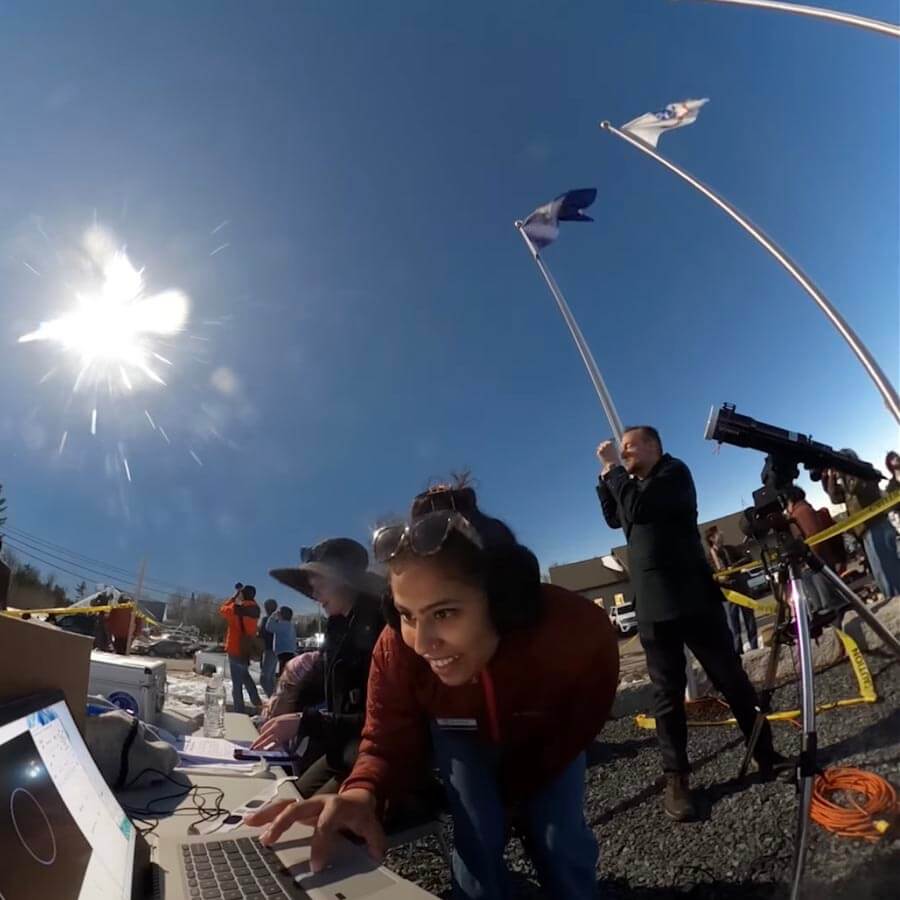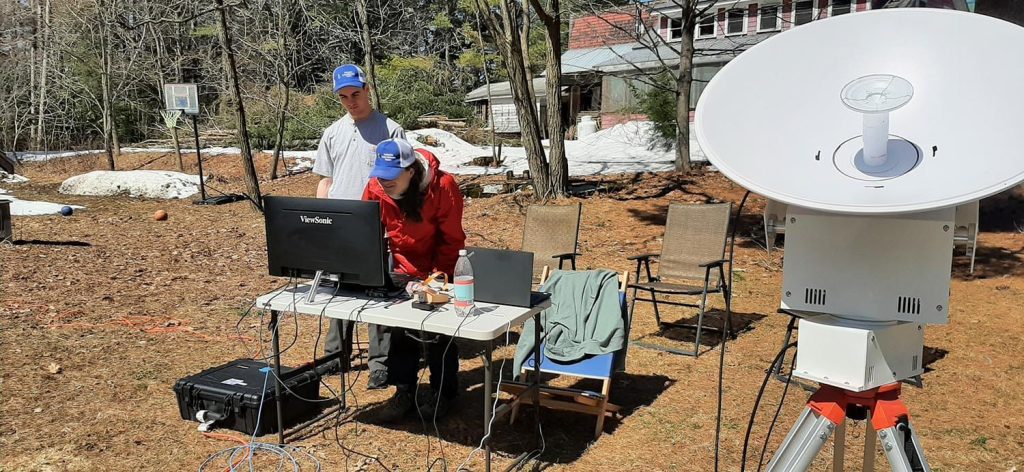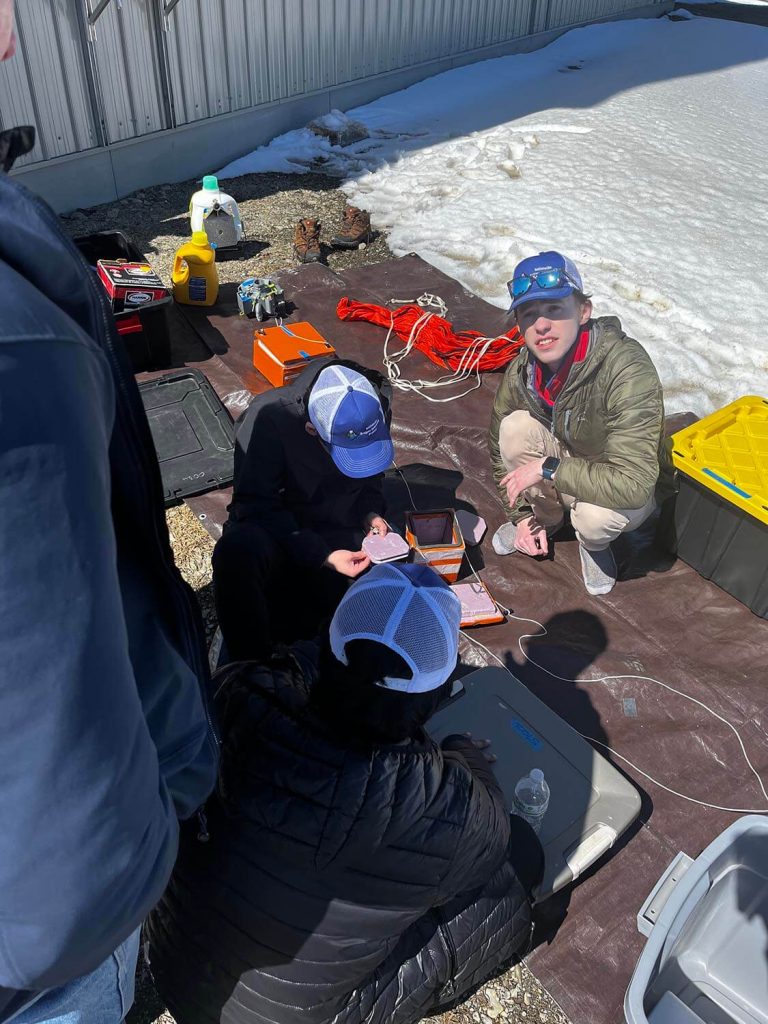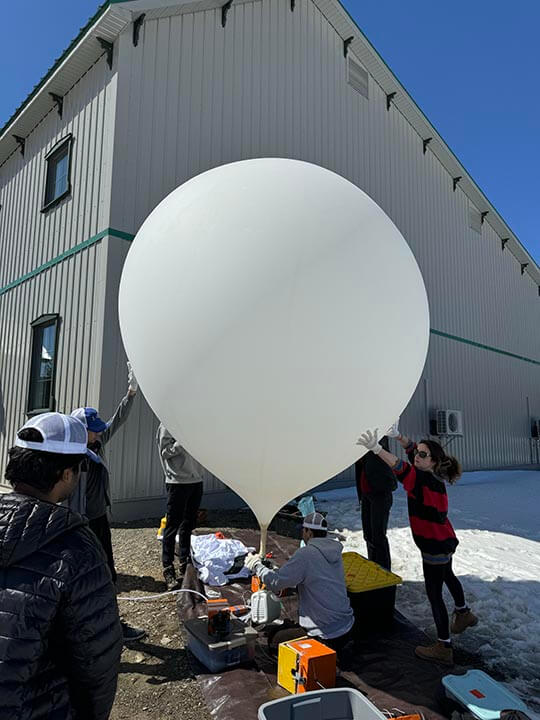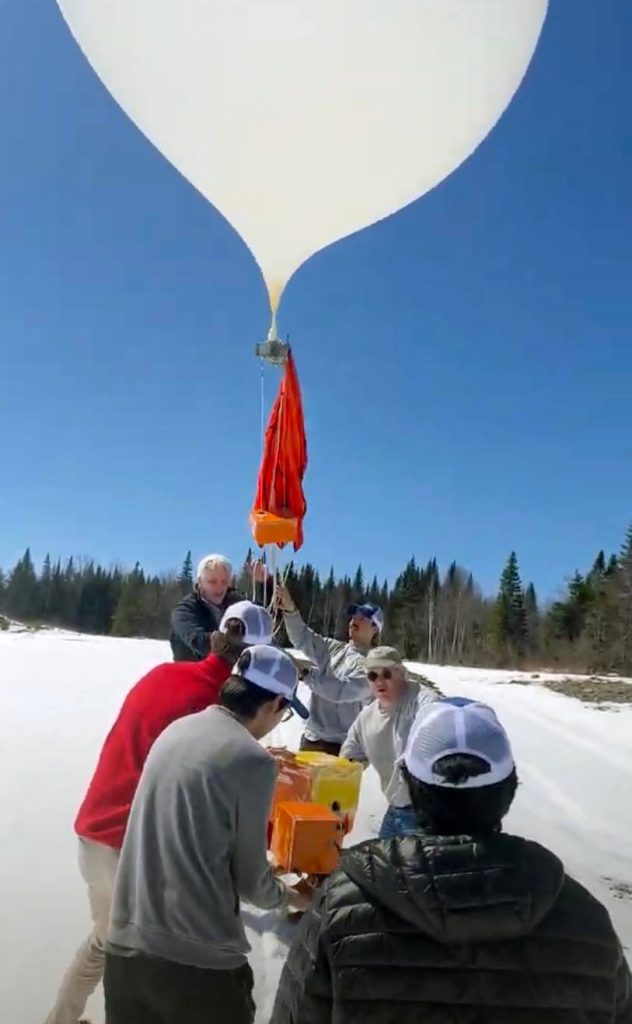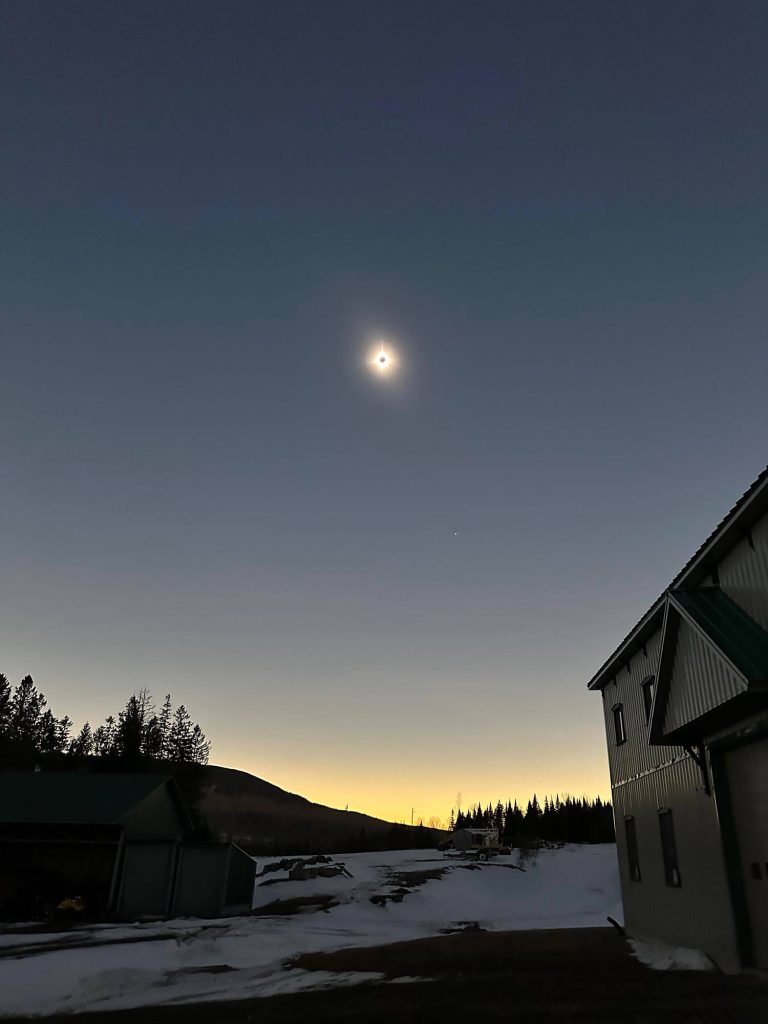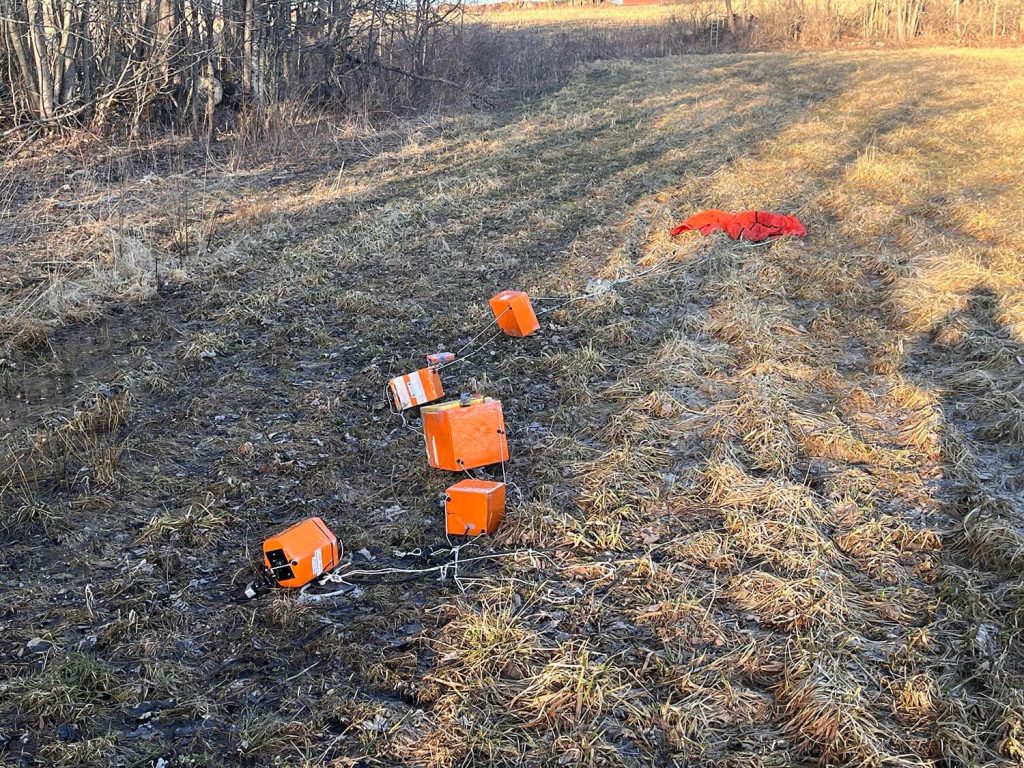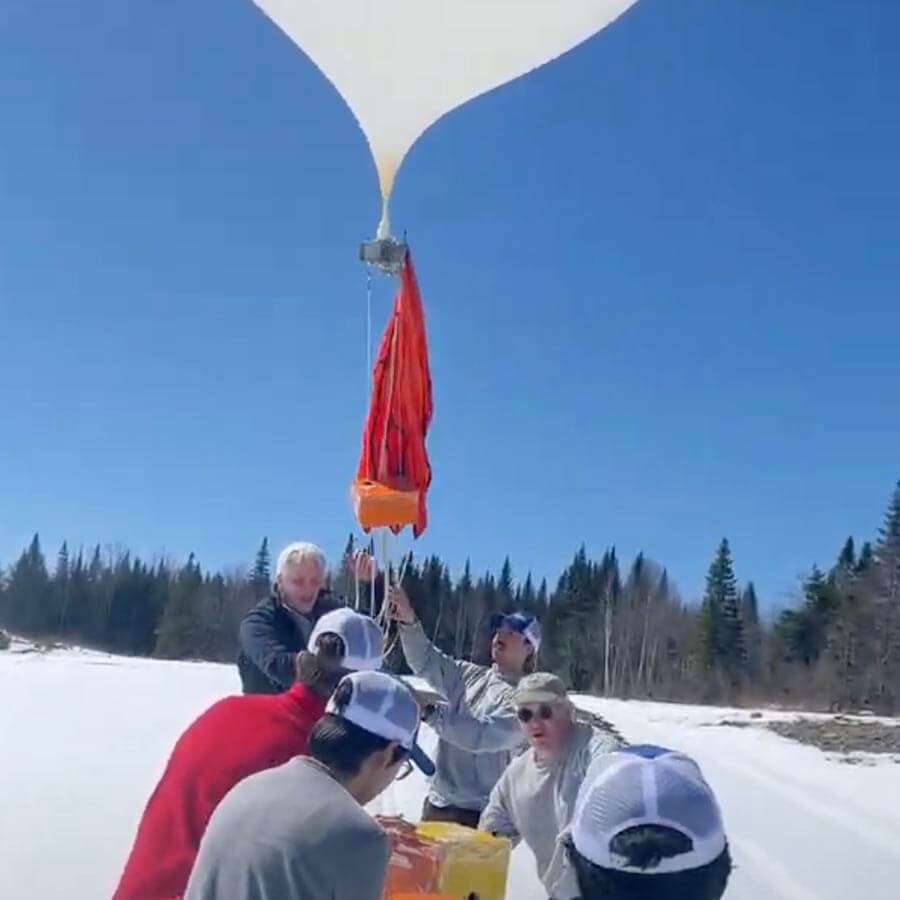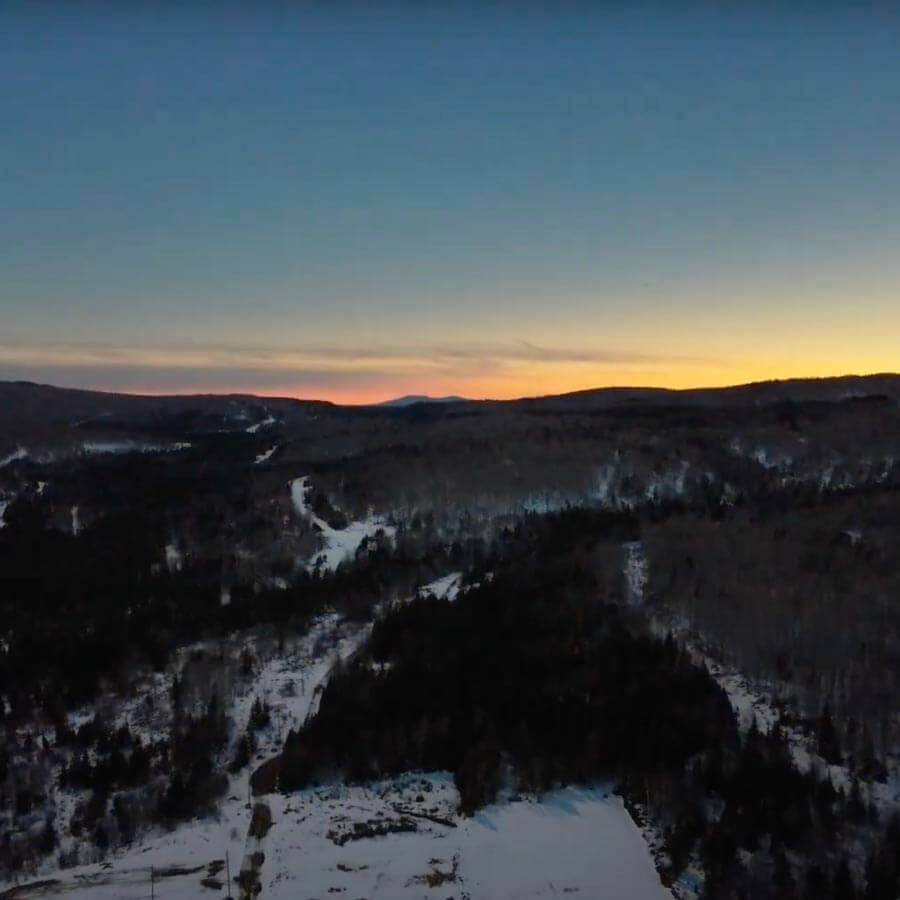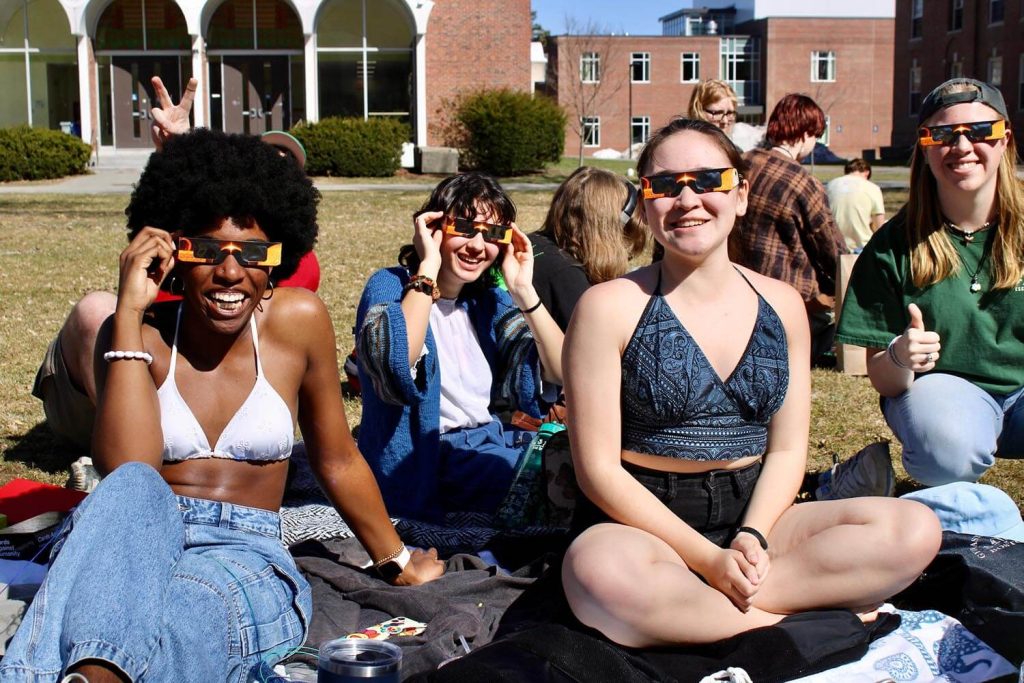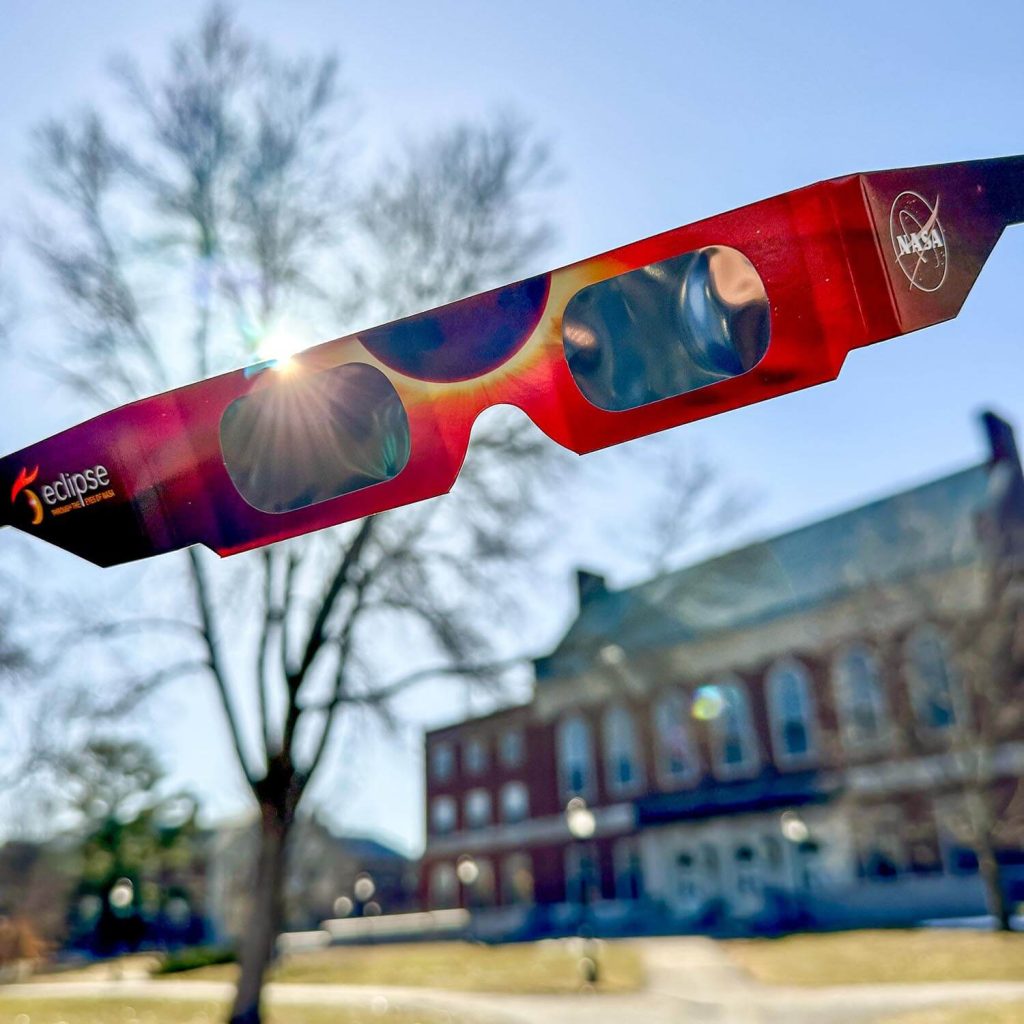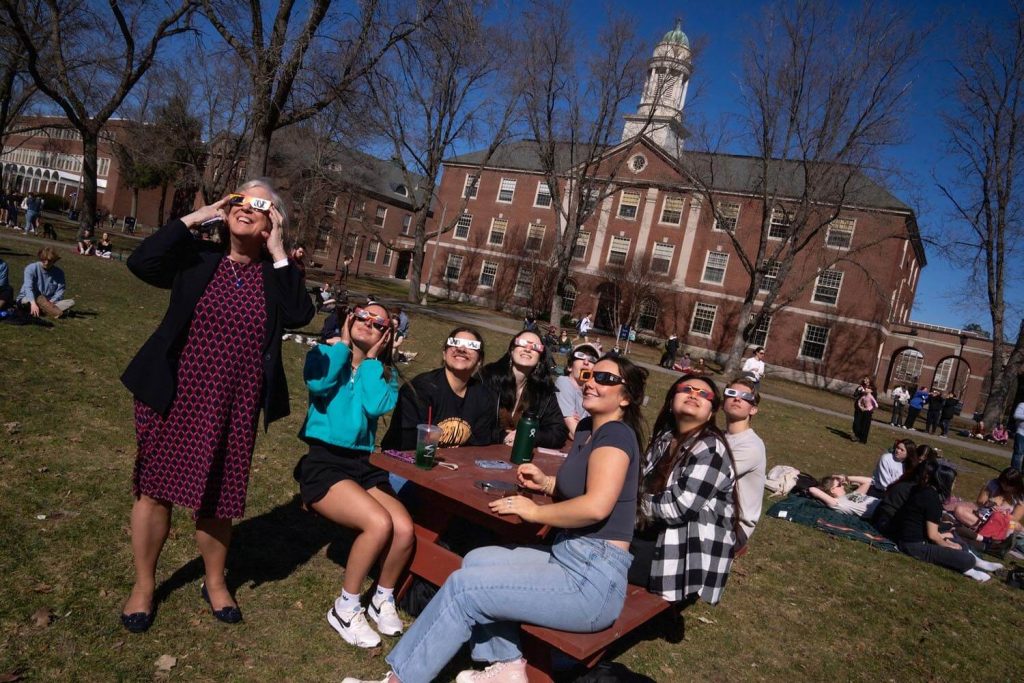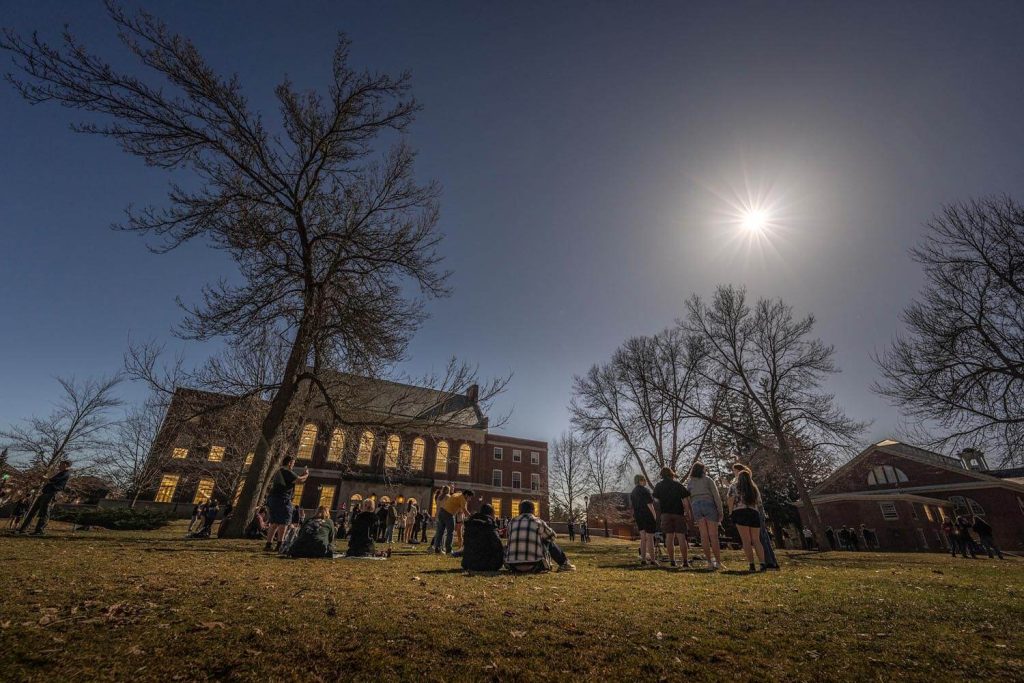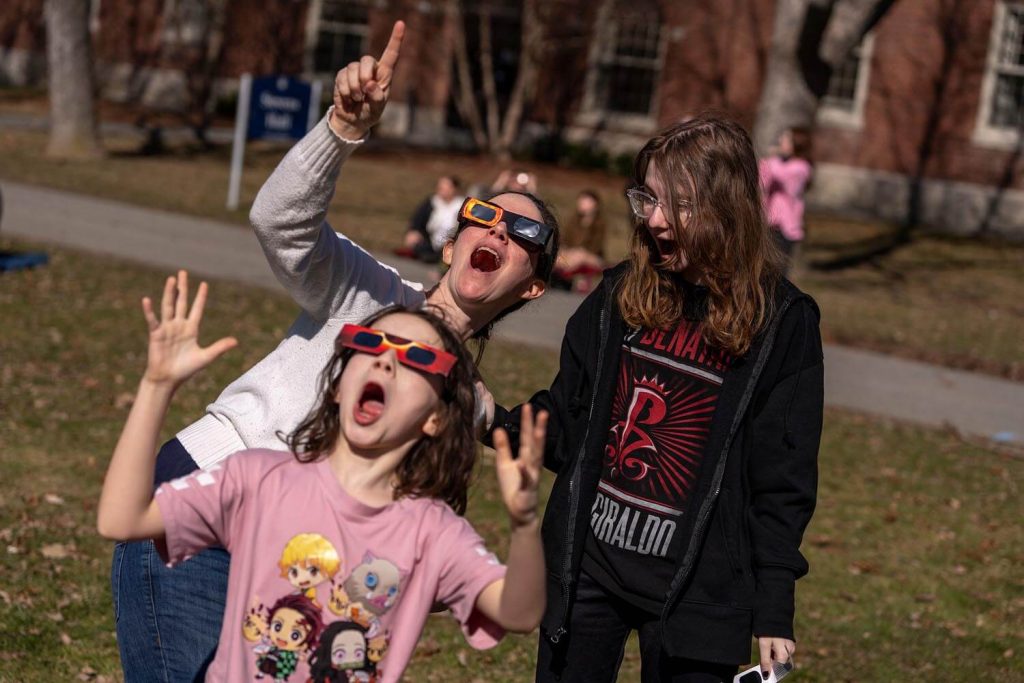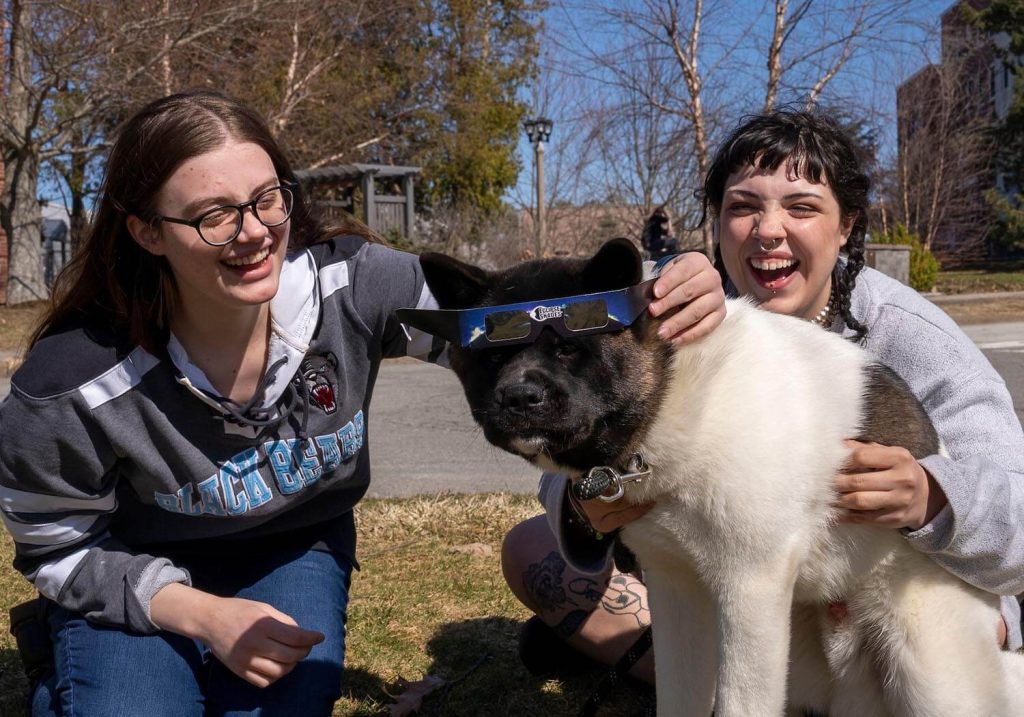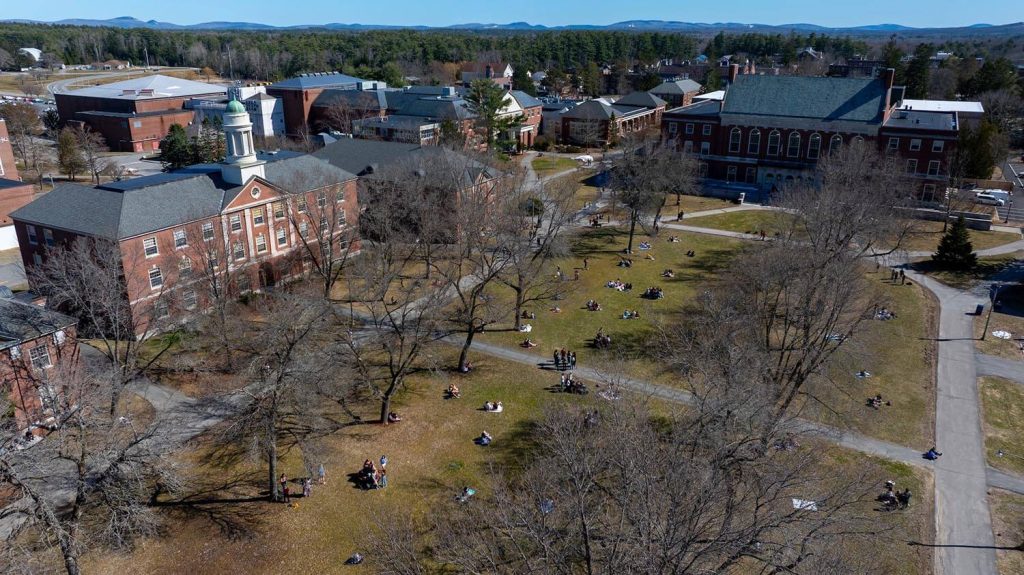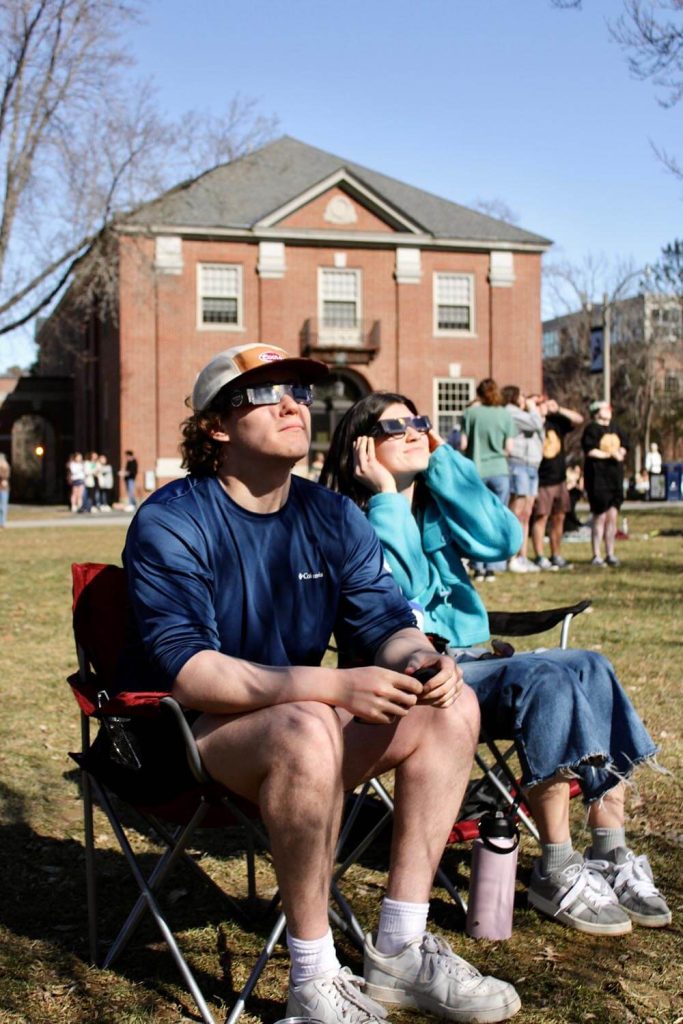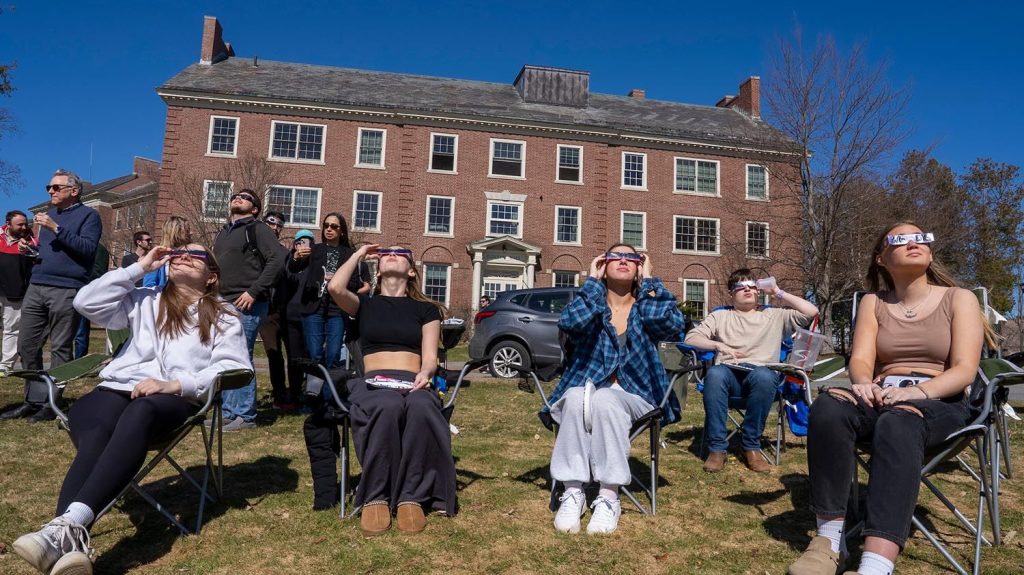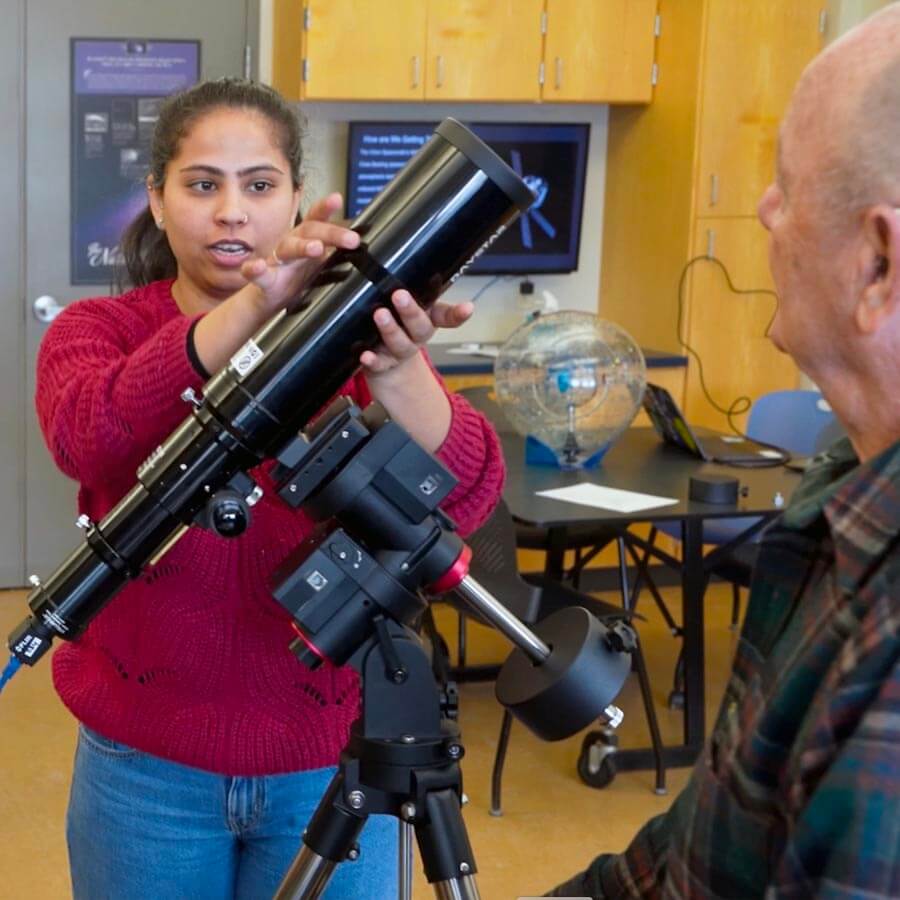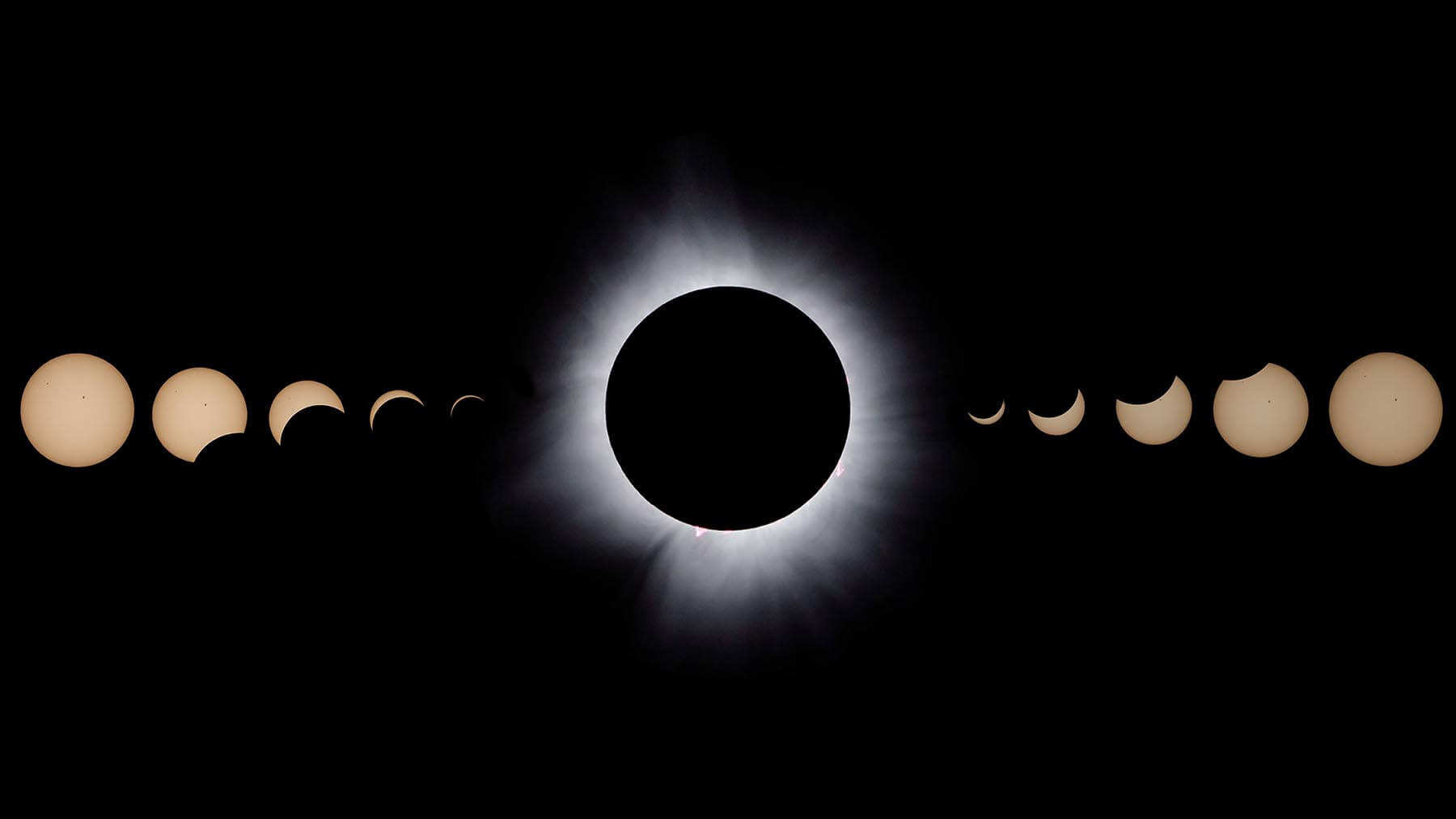
Total Solar Eclipse
04.08.2024
A total solar eclipse only lasts for a few minutes, but in that short window lies bountiful knowledge of Earth and space. Helium was discovered and relativity was proven through eclipse research. Learn how UMaine students and researchers explored the cosmic wonder on April 8, and join them on the adventure.
Looking to recycle your eclipse glasses?
Jackman
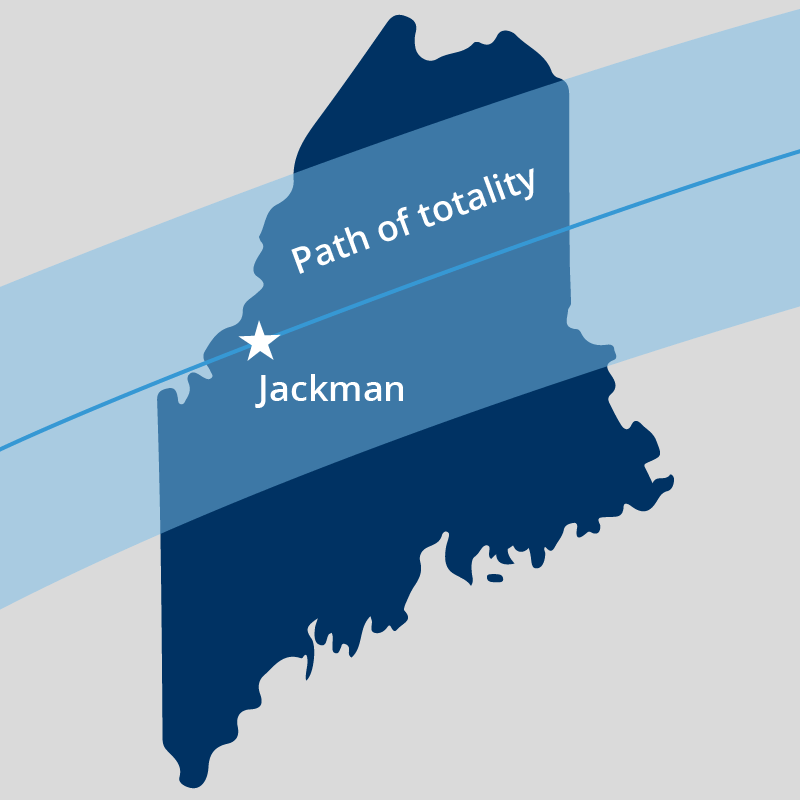
The total solar eclipse appeared for three-and-a-half minutes at 3:29 p.m. in Jackman A group from UMaine was there to capture images of the eclipse as part of the nationwide citizen science project CATE 2024. Meanwhile, another UMaine group launched a balloon with camera systems into the stratosphere to film the cosmic wonder.
Versant Power Astronomy Center research and outreach
High altitude balloon launch
Orono
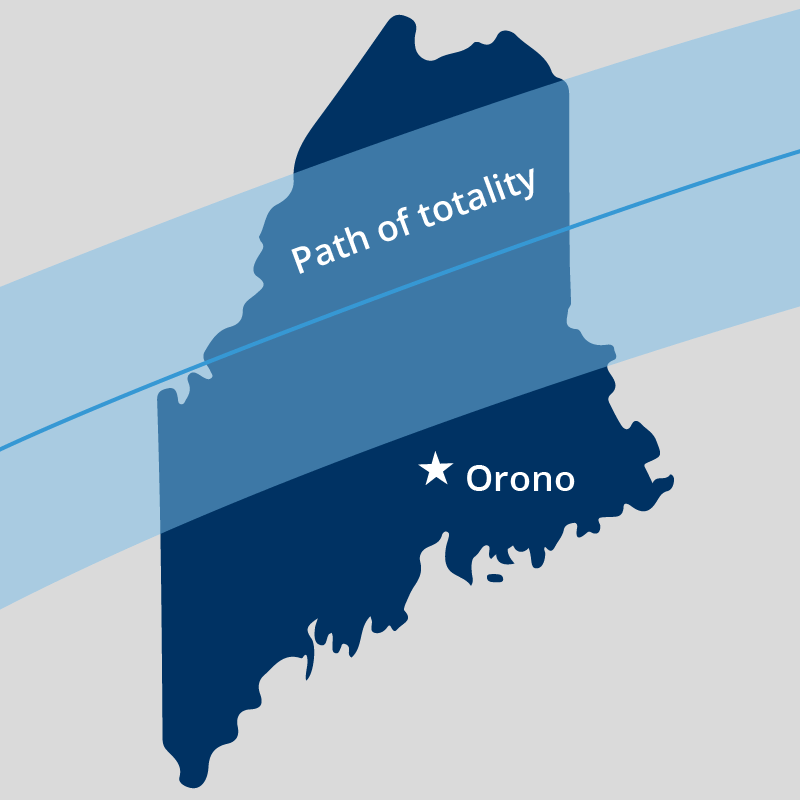
Orono was located outside of the path of totality, meaning they were only able to witness a partial solar eclipse. Regardless, hundreds of people gathered on the Mall to watch the moon cover 98.9% of the sun, leaving a glowing sliver in the sky.
News
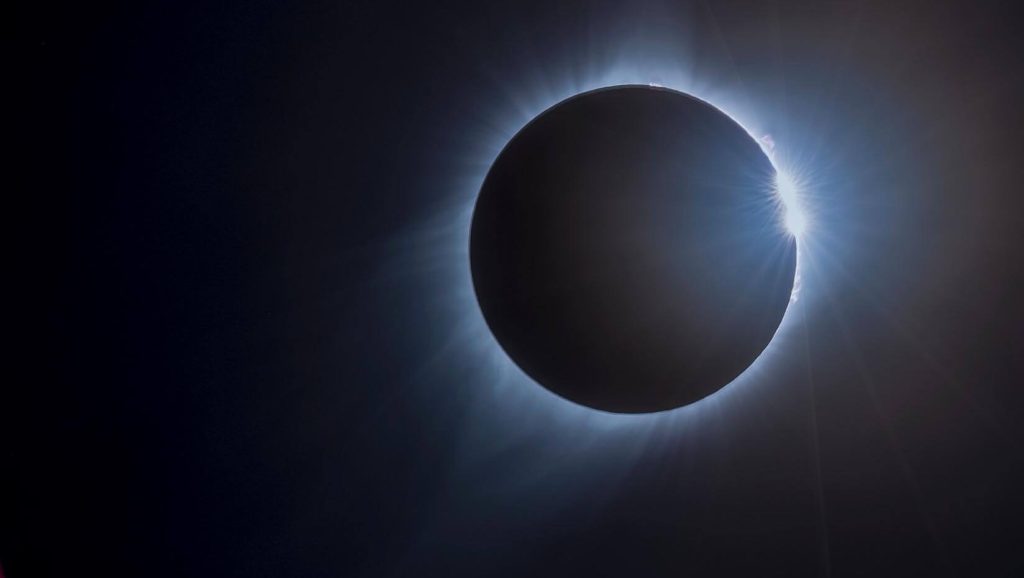
UMaine projects expanding nationwide access to 2024 total solar eclipse
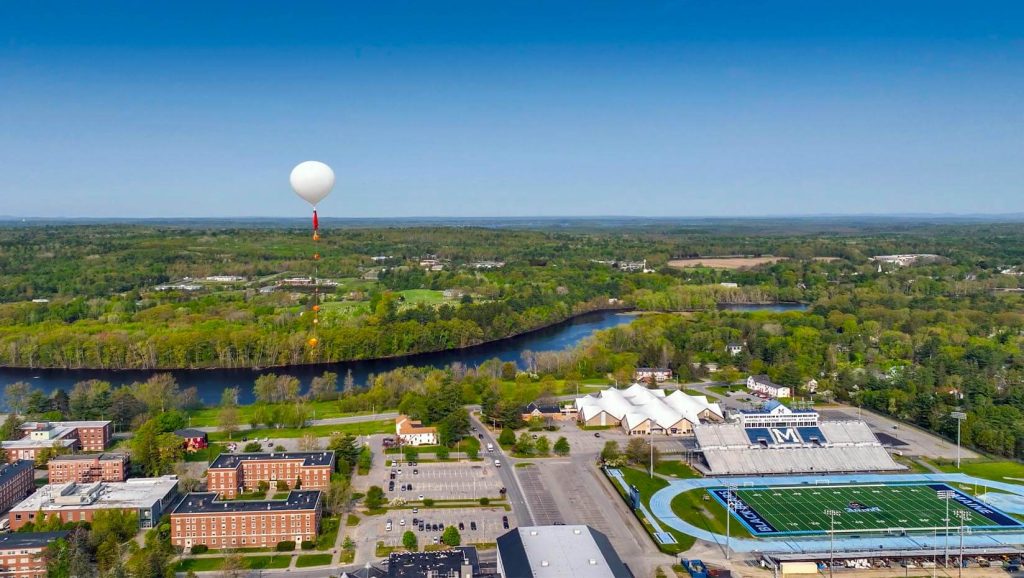
UMaine project will livestream total solar eclipse from the stratosphere

UMaine astronomers coordinating citizen science research on total solar eclipse in Northeast
The Maine Question podcast: How do I experience a total solar eclipse?
Mainers are helping collect images and data of the total solar eclipse for a nationwide citizen science project: CATE2024. UMaine’s Shawn Laatsch and Nikita Saini trained them how to use specialized telescopes to conduct their work.
Meet the researchers
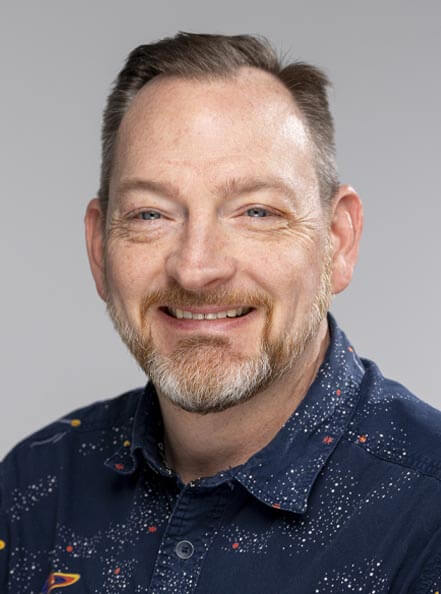
Shawn Laatsch
Director, Versant Power Astronomy Center
For 30 years, Laatsch has worked for and directed planetariums across the U.S. and delivered astronomy shows and lectures worldwide, and has witnessed five total solar eclipses. He serves as the Northeast coordinator for NASA’s eclipse citizen science project: CATE2024.

Nikita Saini
Ph.D. Candidate, Physics
Saini has been training citizen scientists in Maine and the Northeast for NASA’s eclipse citizen science project: CATE2024. She works for the Versant Power Astronomy Center and is a teaching assistant with the Department of Physics and Astronomy.
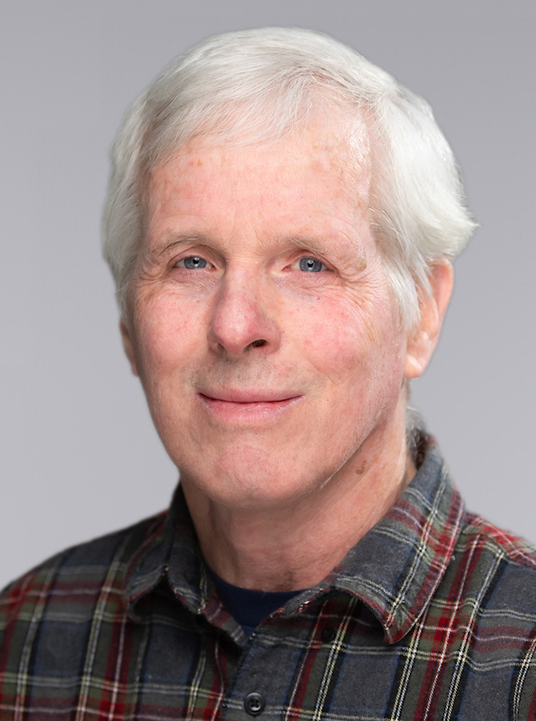
Rick Eason
Associate Professor Emeritus, Electrical and Computer Engineering
Eason directs the UMaine High Altitude Ballooning Program, which he founded in 2011 with funding from the Maine Space Grant Consortium. He’s launched and recovered more than 145 high altitude balloons, including two during the 2017 solar eclipse, and others in places as far away as Hawaii, Kenya and Spain.

Andy Sheaff
Lecturer and facilities support, Electrical and Computer Engineering
Sheaff has been involved with UMaine’s High Altitude Ballooning Program since 2015, and has participated in several eclipse-related projects. At UMaine, he teaches the first-year introductory course in electrical and computer engineering, circuit theory, Linux systems administration and the senior capstone design course sequence. Other projects include a communications system for cave rescue incidents and environmental data collection and logging.

